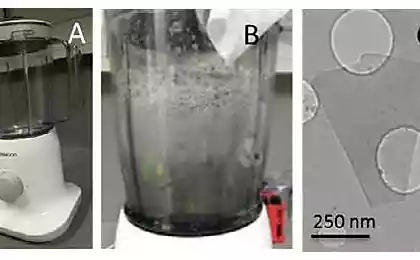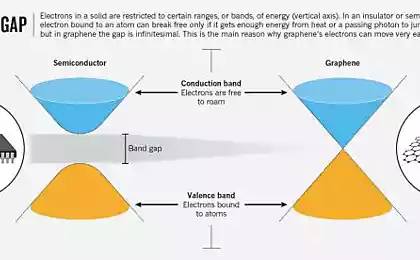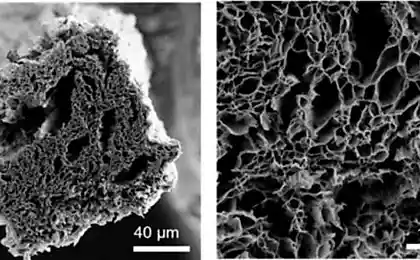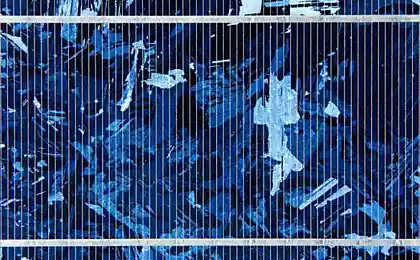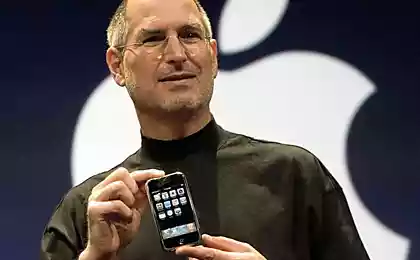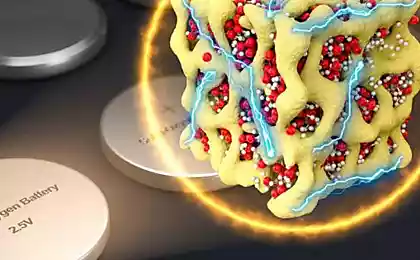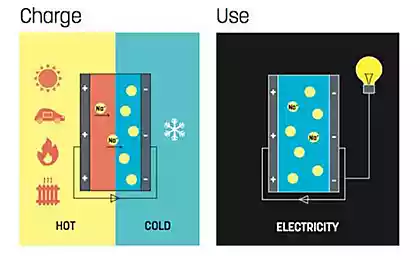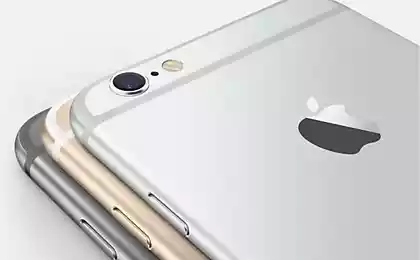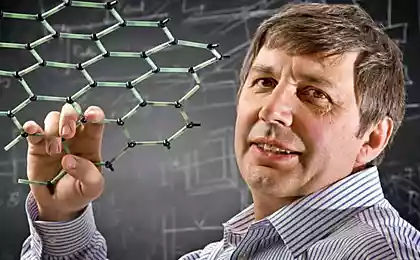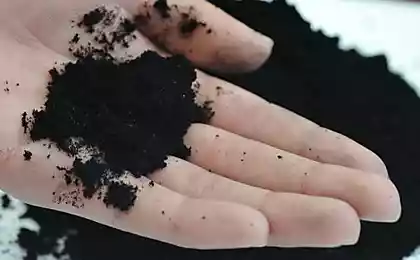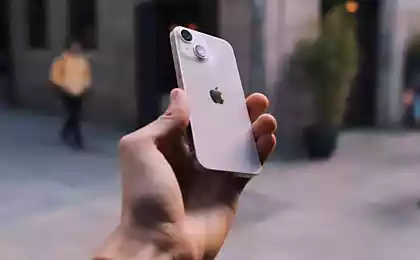422
Supercapacitor of graphene allows charge IPhone in 5 seconds
The Americans created the energy storage system of a new type, the transition to which will allow you to charge your cell phone or even an electric car in seconds. Technology microscale supercapacitors (supercapacitors) based on graphene allows you to charge and discharge the device to hundreds or even thousands of times faster than standard batteries. New supercapacitors are created from a layer of carbon one atom thick. They can be easily manufactured using a standard DVD writer drive and integrated in the electrical device. In the future, the transition to such energy storage system can lead to further miniaturization of mobile devices.
"The integration of the subsystems for energy storage in electronic circuits is a challenging task. Often it limits the level of miniaturization of the entire system," said Richard Kaner, Professor of materials science and engineering, University of California, Los Angeles (UCLA), where he developed a new technology.
As mentioned above, to realize his innovative concept of micro-supercapacitors in practice, the researchers used two-dimensional allotropic modification of carbon, graphene. It is formed by a layer of carbon atoms with thickness of one atom linked in a hexagonal two-dimensional lattice.
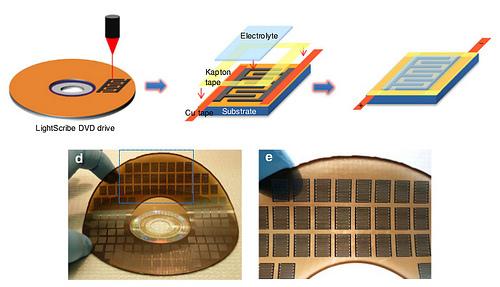
A team of scientists has found a very original way to create new supercapacitors — using a standard DVD writer drive (in common "DVD burner") that support the technology LightScribe. Note that the traditional technology of micro-supercapacitors involve labor-intensive lithographic processes. This leads to inability to develop competitive from an economic point of view devices.
The LightScribe technology originally designed for printing on the reverse side of the optical disc. But scientists from UCLA were able to make it much more useful. They covered the disk with a layer of graphite oxide on a plastic substrate, and then burned with a laser in standard DVD writer drive the outlines of the plates (electrodes) of the supercapacitor. Under the action of the red laser with a wavelength of 650 nanometers, the graphite oxide was turned into graphene, the conductivity of which is six orders of magnitude higher than that of the original material. Scientists have managed less than half an hour to more than 100 graphene supercapacitors on a single disc. In the laboratory the samples were able to achieve a power density of 200 watts per cubic centimeter.
As you know the smaller the distance between the plates of a supercapacitor, the greater its capacity. Therefore, the researchers chose a pattern that not only use the maximum area of the working surface, but also to reduce the path traversed by the ions in the electrolyte to the electrodes. They refused to overlay several layers of graphene electrodes, as this design, despite its functionality, poorly aligned with the integrated circuits. That is why supercapacitors consist of alternating on the same plane separated by a dielectric electrode. The resulting energy storage system can withstand significant deformation without any damage and exhibit excellent stability over many cycles of discharging / charging.
Scientists note that their development can be integrated into flexible displays and electronic paper, as well as in wearable electronics. Coating based on graphene can be applied to the back side of the solar panels and serve for accumulation of energy. Now UCLA is seeking investors and industrial partners with the aim of mass production of micro-supercapacitors. published
P. S. And remember, only by changing their consumption — together we change the world! ©
Join us in Facebook , Vkontakte, Odnoklassniki
Source: energysafe.ru/energy_conservation/batteries_ups/ionistor-iz-grafena-pozvolit-zaryadit-iphone-za-pyat-sekund.html
"The integration of the subsystems for energy storage in electronic circuits is a challenging task. Often it limits the level of miniaturization of the entire system," said Richard Kaner, Professor of materials science and engineering, University of California, Los Angeles (UCLA), where he developed a new technology.
As mentioned above, to realize his innovative concept of micro-supercapacitors in practice, the researchers used two-dimensional allotropic modification of carbon, graphene. It is formed by a layer of carbon atoms with thickness of one atom linked in a hexagonal two-dimensional lattice.

A team of scientists has found a very original way to create new supercapacitors — using a standard DVD writer drive (in common "DVD burner") that support the technology LightScribe. Note that the traditional technology of micro-supercapacitors involve labor-intensive lithographic processes. This leads to inability to develop competitive from an economic point of view devices.
The LightScribe technology originally designed for printing on the reverse side of the optical disc. But scientists from UCLA were able to make it much more useful. They covered the disk with a layer of graphite oxide on a plastic substrate, and then burned with a laser in standard DVD writer drive the outlines of the plates (electrodes) of the supercapacitor. Under the action of the red laser with a wavelength of 650 nanometers, the graphite oxide was turned into graphene, the conductivity of which is six orders of magnitude higher than that of the original material. Scientists have managed less than half an hour to more than 100 graphene supercapacitors on a single disc. In the laboratory the samples were able to achieve a power density of 200 watts per cubic centimeter.
As you know the smaller the distance between the plates of a supercapacitor, the greater its capacity. Therefore, the researchers chose a pattern that not only use the maximum area of the working surface, but also to reduce the path traversed by the ions in the electrolyte to the electrodes. They refused to overlay several layers of graphene electrodes, as this design, despite its functionality, poorly aligned with the integrated circuits. That is why supercapacitors consist of alternating on the same plane separated by a dielectric electrode. The resulting energy storage system can withstand significant deformation without any damage and exhibit excellent stability over many cycles of discharging / charging.
Scientists note that their development can be integrated into flexible displays and electronic paper, as well as in wearable electronics. Coating based on graphene can be applied to the back side of the solar panels and serve for accumulation of energy. Now UCLA is seeking investors and industrial partners with the aim of mass production of micro-supercapacitors. published
P. S. And remember, only by changing their consumption — together we change the world! ©
Join us in Facebook , Vkontakte, Odnoklassniki
Source: energysafe.ru/energy_conservation/batteries_ups/ionistor-iz-grafena-pozvolit-zaryadit-iphone-za-pyat-sekund.html
Kaliningrad student improved the energy storage system of wind
E-Kaia — innovative eco-charger for your smartphone
